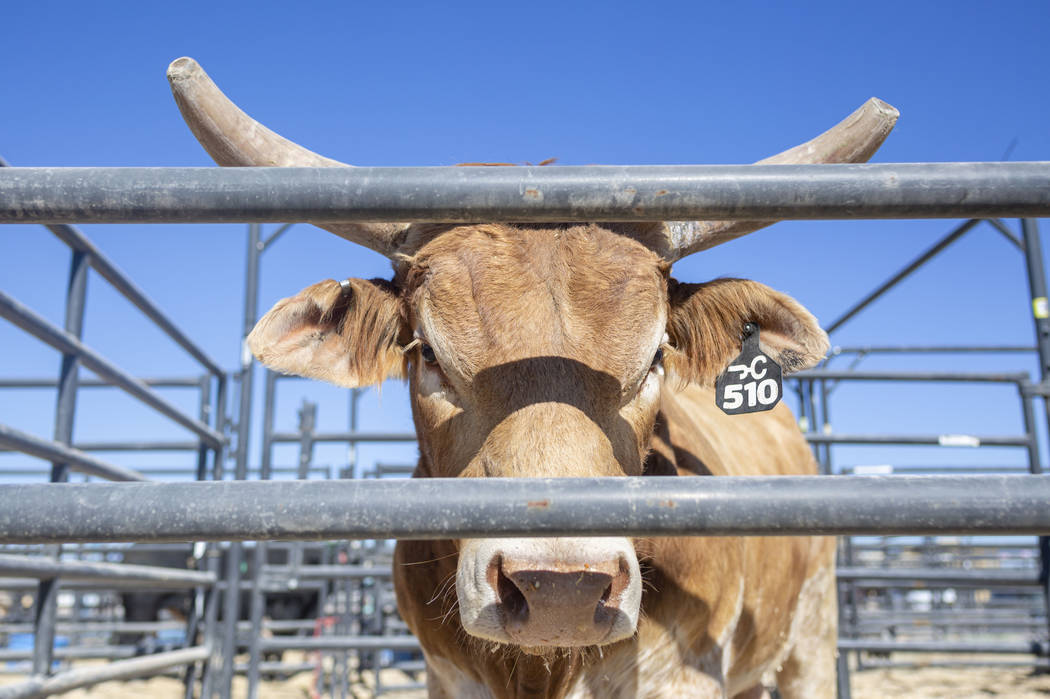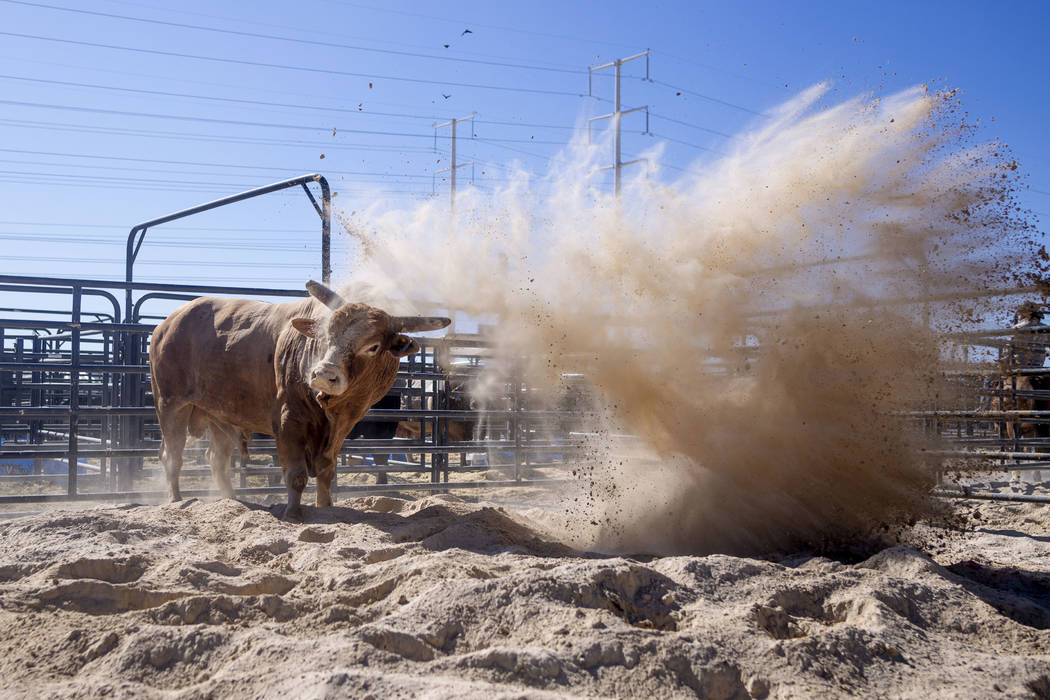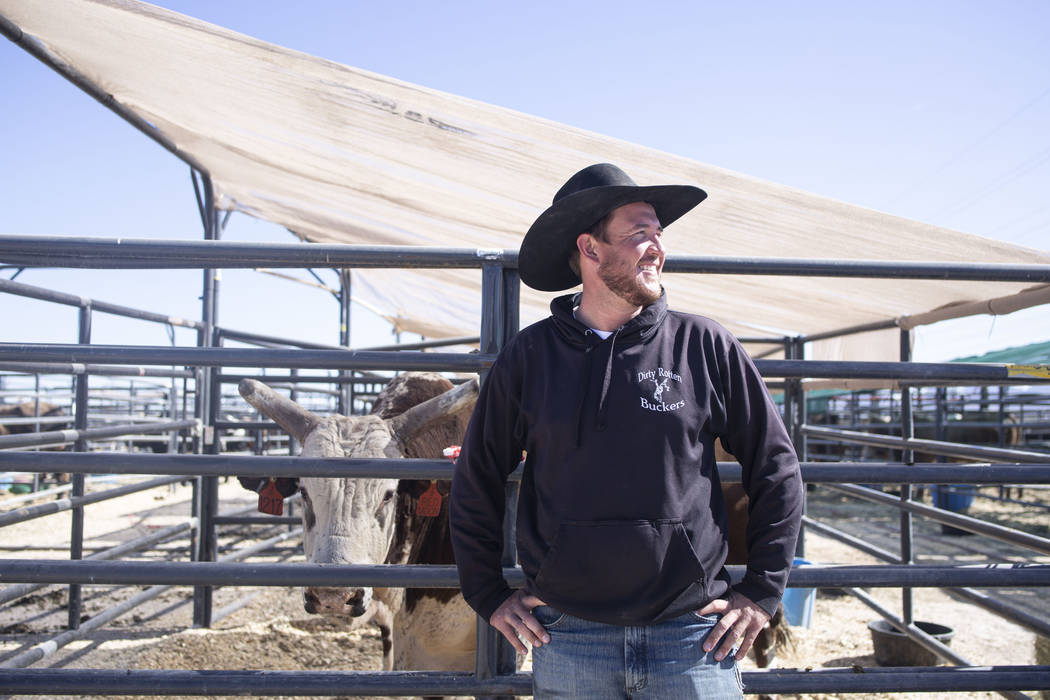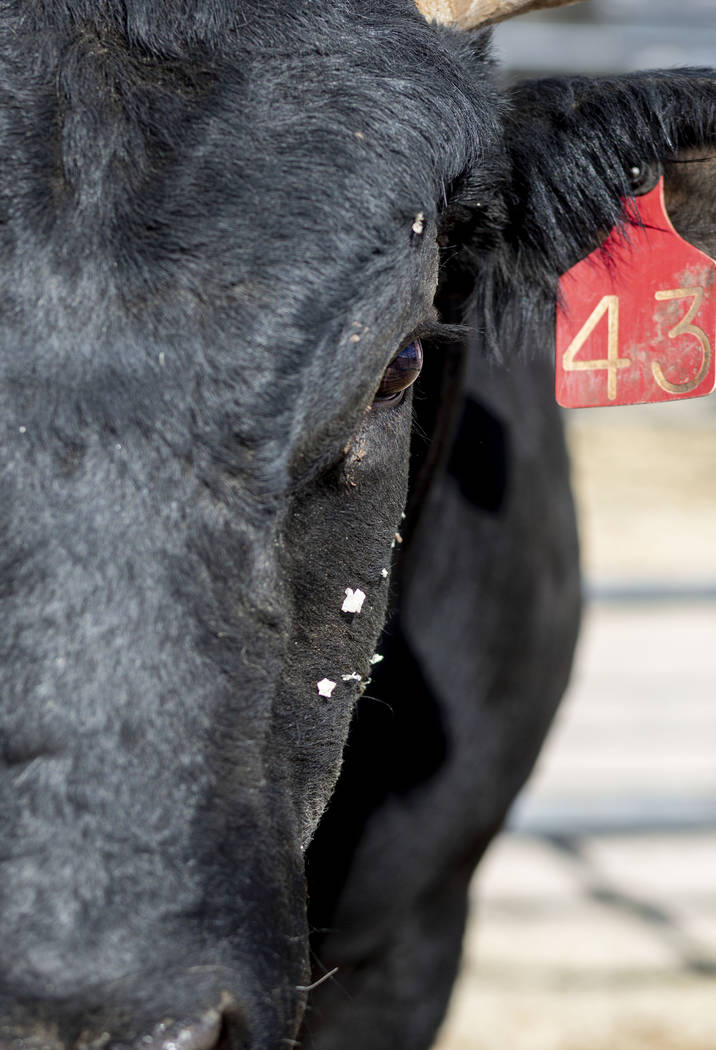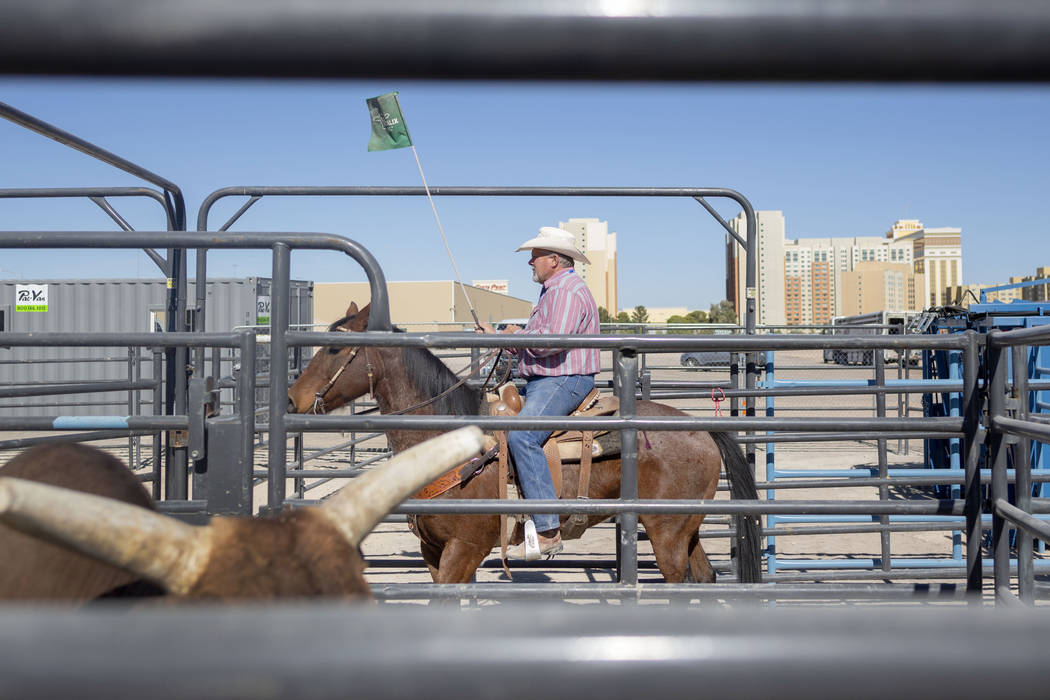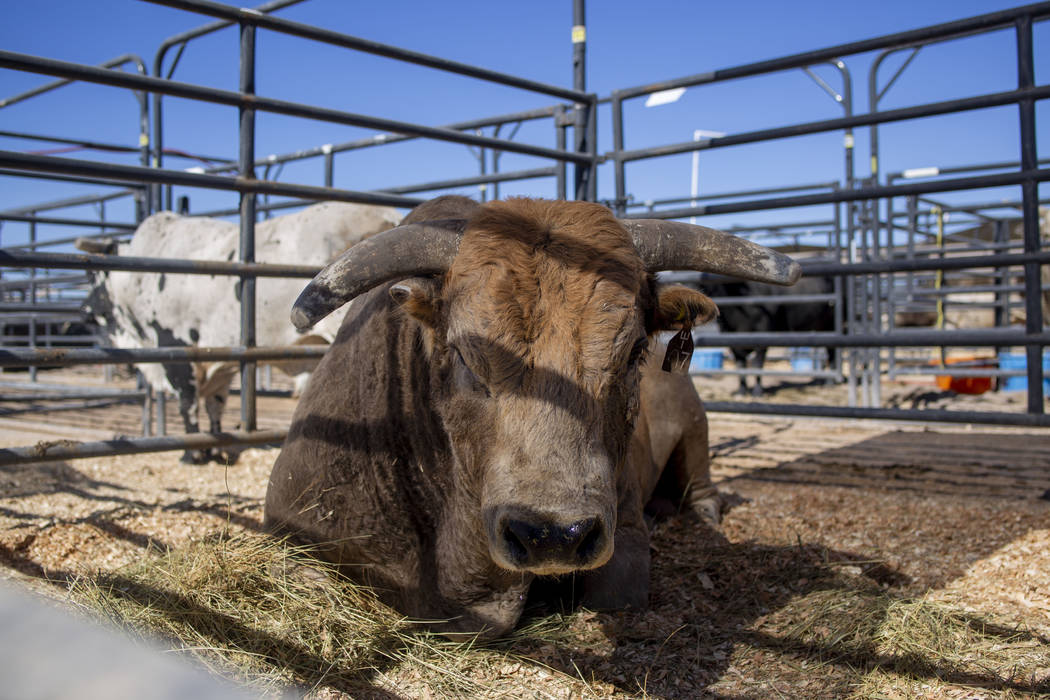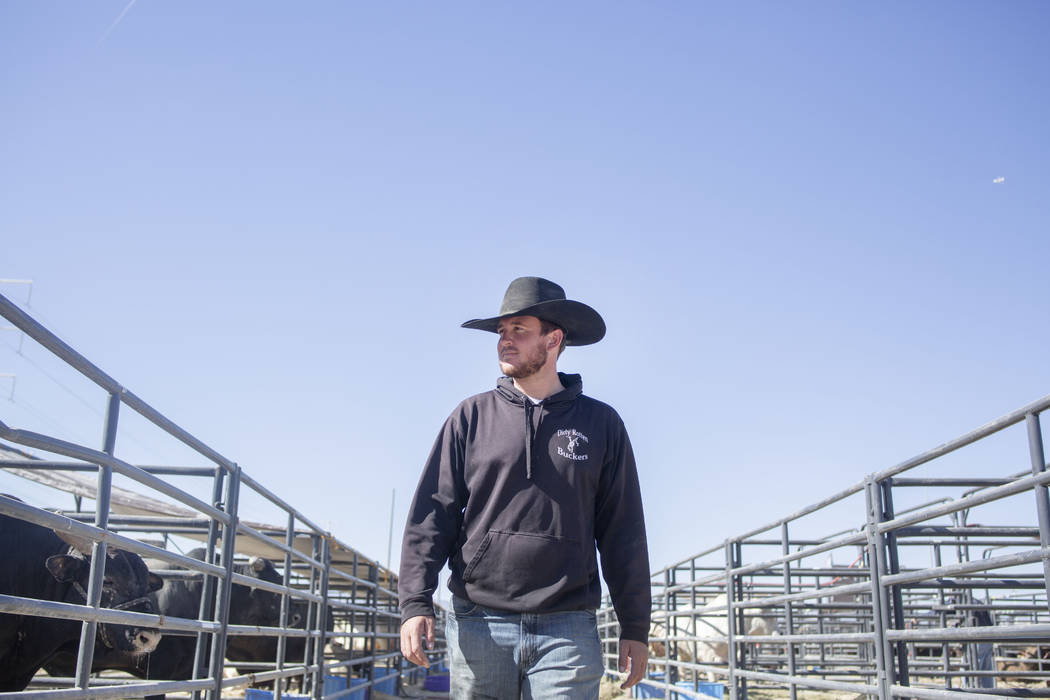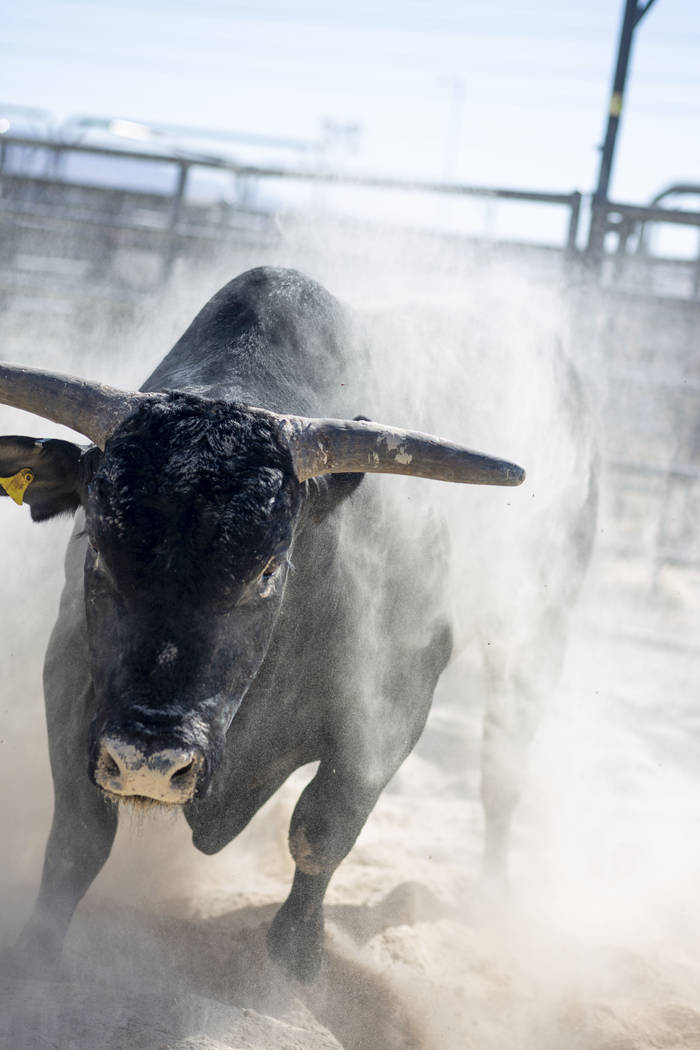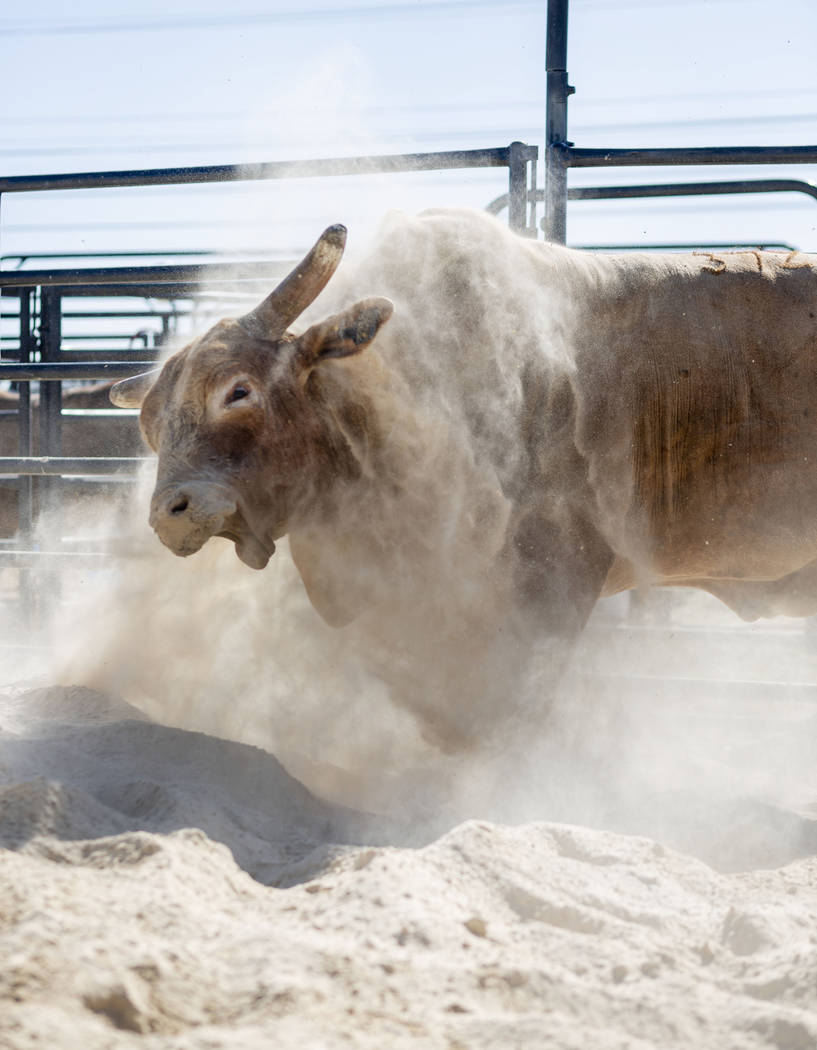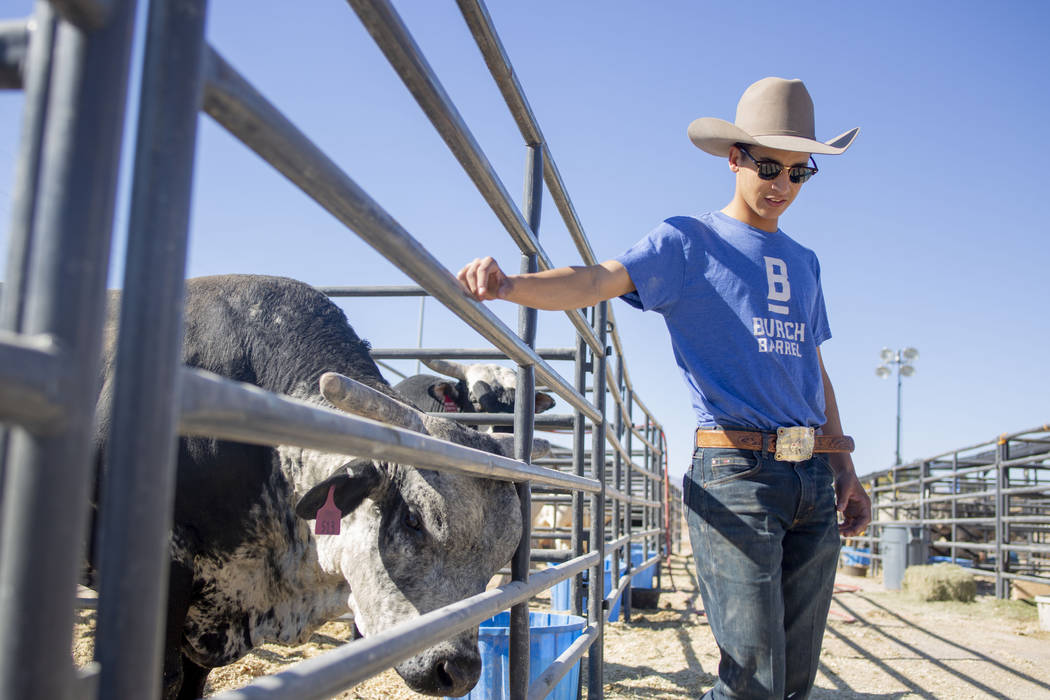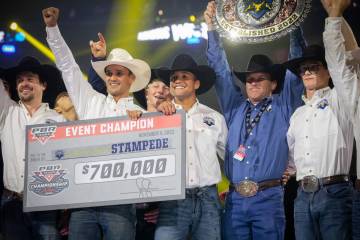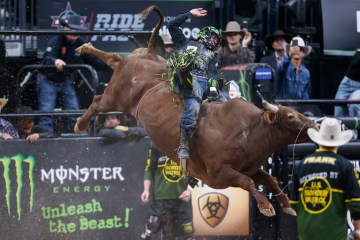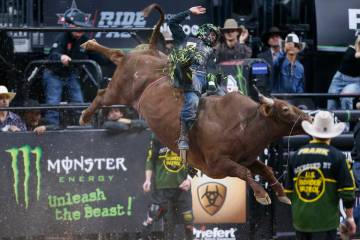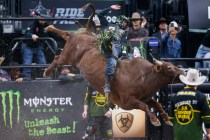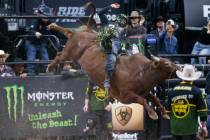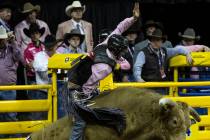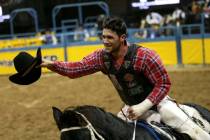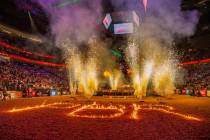Bucking bulls handled with care ahead of PBR World Finals
Ted Groene stood behind South Point on Monday morning, admiring the dozens of world-class athletes that surrounded him.
They’re the kind of athlete that trains year-round. The kind of athlete that maintains an impeccably healthy diet. The kind of athlete ready to perform for thousands of spectators at T-Mobile Arena this week — with two horns, four legs and between 1,200 and 1,800 pounds of lean muscle.
The bulls that buck at the Professional Bull Riders World Finals are every bit as athletic as the cowboys who ride them — according to those who breed, raise and tend to their well-being — and are trained all year to compete at the sport’s most prestigious event.
Groene works events as the livestock superintendent and tours with the PBR, setting up housing for the bulls and ensuring they’re in prime condition to compete for the cowboys.
He says the bucking bulls are some of the most athletic specimens in the world.
“There’s a lot of fans that will just come to look at the bulls,” said Groene, a lifelong cowboy and former bullfighter who lives in Pahrump and oversees the stabling of the livestock during the PBR World Finals. “More and more people follow it now and have favorite bulls more than favorite cowboys. It’s a huge deal.”
Bucking bulls breed more bucking bulls, and their lineage is charted diligently by their owners, known as stock contractors. Calves are prepared with caution and care for lengthy careers. They typically won’t buck until they’re about a year old and practice bucking dummies before transitioning to human riders.
Some take to it more than others.
“You can’t really make them buck. But some of them, the more you buck them, they’ll figure out what the deal is and they’ll get better,” Groene said. “Some of them won’t ever buck. Some of them might buck for a year and then just are done.”
The bucking bulls that show considerable promise transition to high protein diets comprised of wholesome, healthy grains. They also exercise regularly and rest on soft, high quality hay, ensuring peak physical condition ahead of their eight-second performances at bull-riding events.
They’re fed and watered first thing in the morning, often before their stock contractors eat.
“These animals come first,” said Groene’s son Jared, who works alongside his father and will escort the PBR bulls out of the arena after they perform. “They eat before we eat. … They drink before we drink.”
The bulls at the PBR World Finals are owned by a variety of stock contractors, including Chad Berger, eight times the PBR stock contractor of the year. He says caring for his bulls is an “all-day thing,” and noted that he trains them like they’re elite human athletes to maximize their performance.
Roughly 12,000 bucking bulls are registered with American Bucking Bull Inc., the world’s largest bucking bull organization. The best bulls from across the country — and Canada — earn invitations to the PBR World Finals and are housed comfortably in Groene’s bullpens behind the South Point.
They’re evaluated at events on how high they kick, how fast they spin and their overall intensity. Upwards of $2 million is awarded to the top stock contractors based on the performance of their bulls this weekend.
“There’s a lot of money in it … Millions of dollars,” Groene said. “What all these bulls are valued, if you try to put it together, I’ve got no idea. But it’s way in the millions.”
Berger’s championship-caliber bulls buck between 12 and 20 times a year. Some bulls need more rest, he says, while other bulls are bucked more regularly.
He said the top bulls can buck for five or six years before they “hang out with a bunch of girls and retire.”
To produce more bucking bulls and reignite the cycle again.
“They’re athletes. They’re training to perform and compete at that high level. … What comes to Vegas is the best of the best,” said Jay Daugherty, the president of American Bucking Bull Inc. “These guys put so much attention and time and love into these animals because it’s their passion. They take care of them better than they do themselves.”
Contact reporter Sam Gordon at sgordon@reviewjournal.com. Follow @BySamGordon on Twitter.



